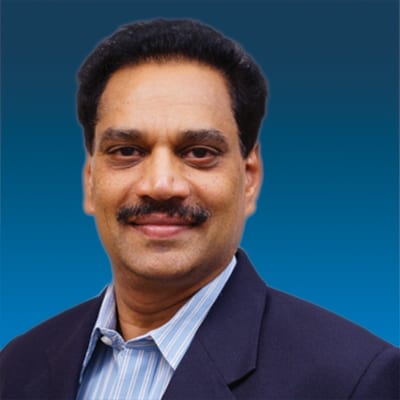
Anil Jampala
The U.S. electricity grid is foundational to the nation’s economic vitality, stability, and societal well-being. Recent data indicates significant inequities in energy sourcing and distribution. Without strategic planning and thoughtful policy design, the benefits of clean energy investment will not be spread equitably.
Grid evolution
The “grid” is a wide-area synchronous network of more than 7,300 power plants, 160,000 miles of high-voltage power lines, and millions of miles of low-voltage distribution transformers.[1]
This complex lifeline is aging and struggling to meet current demands, major blackouts are increasing, and cyber warfare and terrorist attacks are looming. The grid faces a future of more people and electricity demands to maintain residences, commerce, agriculture, transportation, and more. Renewables are increasing, and consumers are becoming prosumers, further straining the grid.
Energy burden
The Universal Declaration of Human Rights of 1948 recognizes access to energy as a human right, declaring it essential for life, food, shelter, health, and education. However, some U.S. communities still cannot afford or access electricity.
The 2020 Residential Energy Consumption Survey found that 34 million U.S. households struggled to pay energy bills or maintain adequate temperatures in their home. About one in five Americans reported forgoing other necessities (e.g., food) to pay their energy bills. Of this population, 10% struggled with utility disconnections and live in unhealthy temperatures. Certain demographic groups reported more instances of energy insecurity, including lower-income households, households with children, and renters.[2]
Energy equity
Energy equity recognizes disadvantaged communities that have had underinvestment in clean energy infrastructure and provides a level playing field for marginalized groups to participate in and benefit from the energy market. Energy equity aims to safeguard access to an impartial energy system that reaches all levels of society, which requires a balanced distribution of benefits using a strategic roadmap to implement operational technologies (e.g., infrastructure development, system design, procedures, and policies).
Building the framework
Environmental justice and energy equity are new to the arena and have yet to be widely adopted. However, we are starting to see policymakers, labs, and utilities address energy burden disparities through community outreach, research and development (R&D), focused initiatives, and legislation.
Federal investments directed to environmental justice
The Biden-Harris administration has made a national commitment to environmental justice through Section 223 of EO 14008, which established the Justice40 Initiative. This initiative directs 40% of the overall benefits of certain federal investments to flow to disadvantaged communities that are marginalized, underserved, and overburdened by pollution. The Department of Energy (DOE) is playing a major role in Justice40, which will apply to a large fraction of its programs, including many R&D programs.
R&D through our national labs
Several national labs are conducting innovative research and development to improve the nation’s electrical grid infrastructure. The Pacific Northwest National Lab is laying the groundwork for incorporating equity and environmental justice as a central pillar of grid modernization initiatives. The National Renewable Energy Laboratory is developing and evaluating technologies and systems that enable electric grids to function more efficiently, integrate more renewable energy, and be more resilient and secure under all operating conditions.
Utilities forging their own path
Utilities have an opportunity to be a major change agent in the drive toward energy equity. One state’s approach is building a just and regenerative energy system that prioritizes the health and well-being of communities at each stage of the process. In 2021, Washington State’s Clean Energy Transition Act (CETA) came into full effect—mandating that all utilities ensure an equitable distribution of benefits and burden reduction in achieving the law’s goals.
Addressing energy inequity
Initiatives to address energy equity are starting to take root. Many examples exist of states creating opportunities for low- and moderate-income households to participate in the clean energy economy. Energy equity solutions are surfacing throughout various government organizations, academic institutions, and communities nationwide. For example:
- DOE has developed the Low-Income Energy Affordability Data (LEAD) Tool to illustrate housing and energy characteristics for low- and moderate-income households. Strategic analytics is vital to helping stakeholders make data-driven decisions when planning energy goals.
- The University of Michigan’s School for Environment and Sustainability has developed the Energy Equity Project (EEP) Framework. This holistic guide and accountability tool focuses on measuring and advancing energy equity and ensuring measurable progress.
- For over 15 years, the American Council for an Energy-Efficient Economy (ACEEE) has published scorecards and other progress reports to benchmark and drive clean energy action among states, cities, and utilities. In February 2021, ACEEE started a two-year Leading with Equity Initiative to define and develop equitable energy efficiency policies and programs.
How PSC can help with energy equity
PSC’s internationally recognized electricity experts help the energy and utility industries plan (safely and cost-effectively) for a radically different future—ensuring a smooth transition to clean, renewable, and affordable energy. Our operational technologies service can help:
- Evaluate existing footprints.
- Access funds allocated to energy equity initiatives like Justice40.
- Assess current energy infrastructures to determine if and where to build.
- Deliver and implement roadmaps based on our experience with and knowledge of power studies.
- Determine the need for a new distribution/outage management system.
Addressing energy equity is a matter of when, not if. At PSC, we help utilities and other energy industry stakeholders position themselves for the future with insight and expertise that supports transformation. Find out more about our operational technologies service and please contact us to get started on your next project.
[1] U.S. Energy Information Administration (EIA), “U.S. electric system is made up of interconnections and balancing authorities,” https://www.eia.gov/todayinenergy/detail.php?id=27152, July 2016.
[2] U.S. Energy Information Administration (EIA), “In 2020, 27% of U.S. households had difficulty meeting their energy needs,” https://www.eia.gov/todayinenergy/detail.php?id=51979&src=%E2%80%B9%20Consumption%20%20%20%20%20%20Residential%20Energy%20Consumption%20Survey%20(RECS)-b6, April 2022.
